Harvesters of Yesteryear
Posted: Wed Dec 08, 2010 7:04 pm
Well, Ok, not quite that old. In the 1970's and 1980's I was deeply involved with harvesters. The following are pictures that I took at the time for instructional use or for my examination during development work on the electronic systems we were building. Hope they will be of some interest. All are taken from 35mm slides taken with a Zenith (Russian) camera.
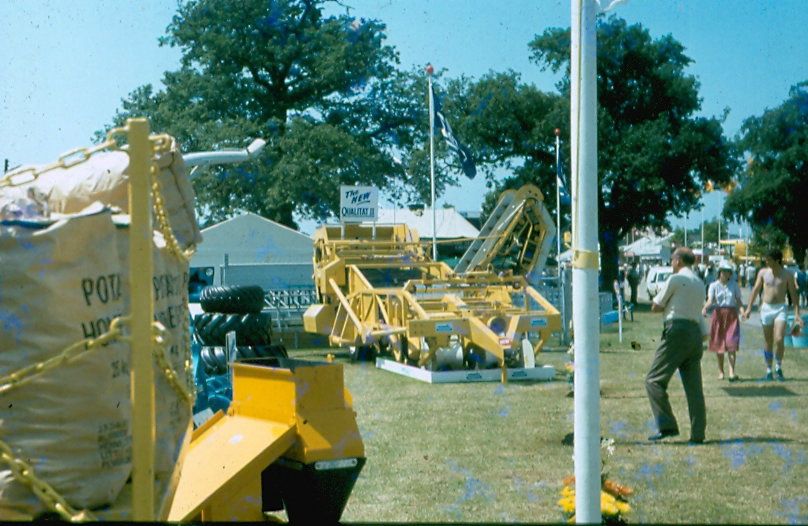
Zetor Potato Harvester, 1983, at the Royal Show, Stoneleigh, Warwickshire.
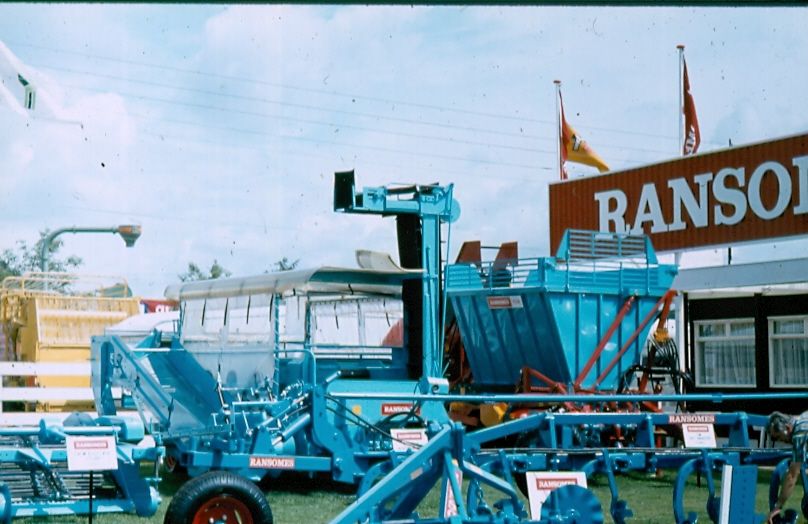
Ransomes stand at the same show. Potato harvesters and lifter, Ransomes TIM sugar beet harvester and a New Theme plough.
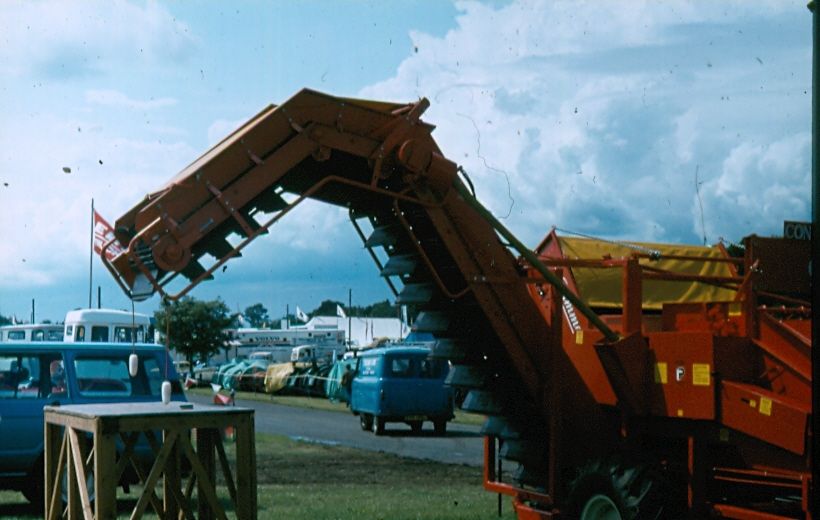
Setting up a demonstration of our original "RiteHite" unit to control the drop height of potatoes being loaded into the trailers. This picture was taken at the Royal Norfolk Show in 1982. We were in a "New Idea" section and won the best demonstration, best idea and a Silver medal. The Silver is the top medal at the show and this was the first time it had been won for a number of years.
The van in the background is a Commer.
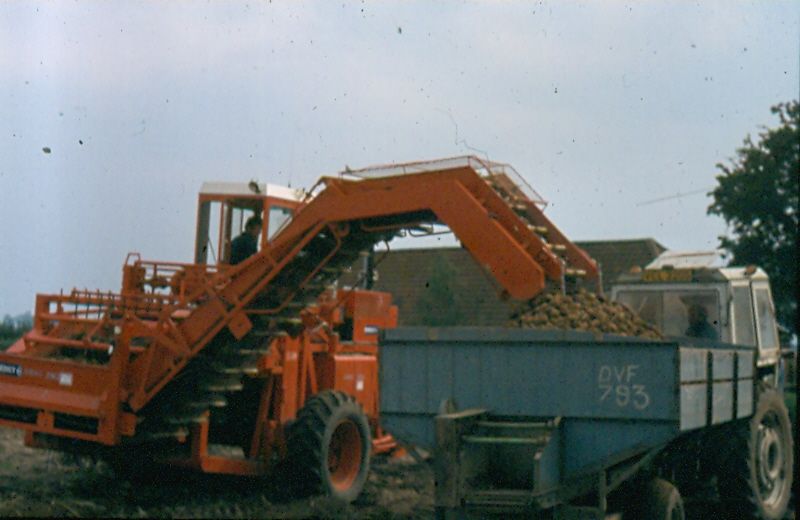

RiteHite at work in the field. The unit developed over the years and the mercury switch sensors were replaced with Infra-Red units. This picture was taken in Ireland with a unit fitted to a Reekie harvester. Reekie and Grimme offered the RiteHite as optional equipment.

Standen Tornado, self propelled two row beet harvester. Not as successful as the Standen Solobeet from which it was developed.
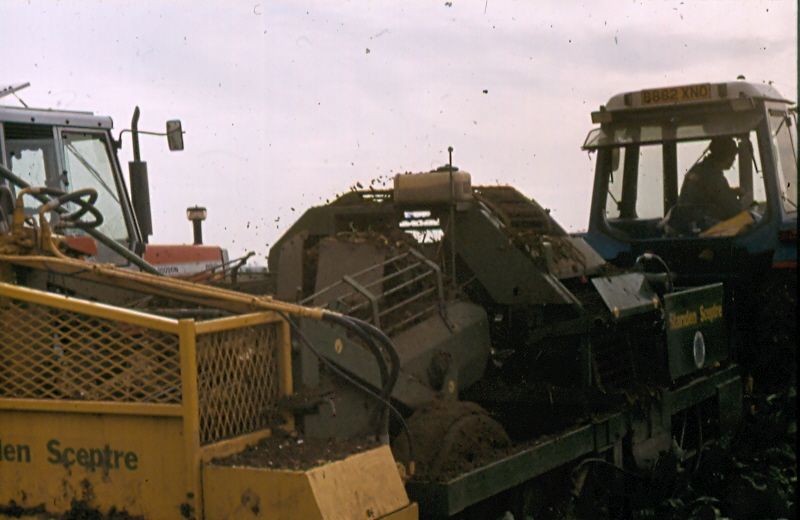
Standen Sceptre, three/four row beet harvester. One of the gentlest cleaning machines on the market but was introduced too late. Every farmer wanted a six row self propelled unit.

Standen Sceptre.
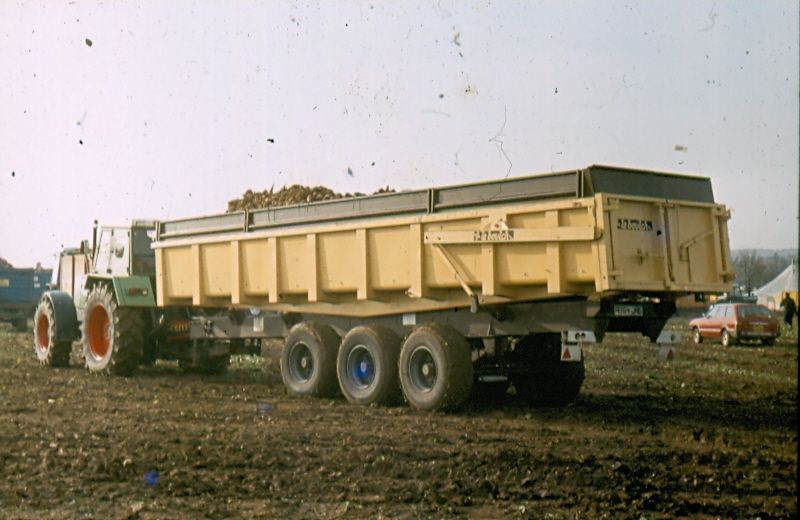
A rather large trailer at the beet demonstration 1984.

A Standen Super Six trailed 6 row sugar beet lifter. This was a badge engineered system from a German manufacturer, brought in as a stop-gap until the lauch of .......
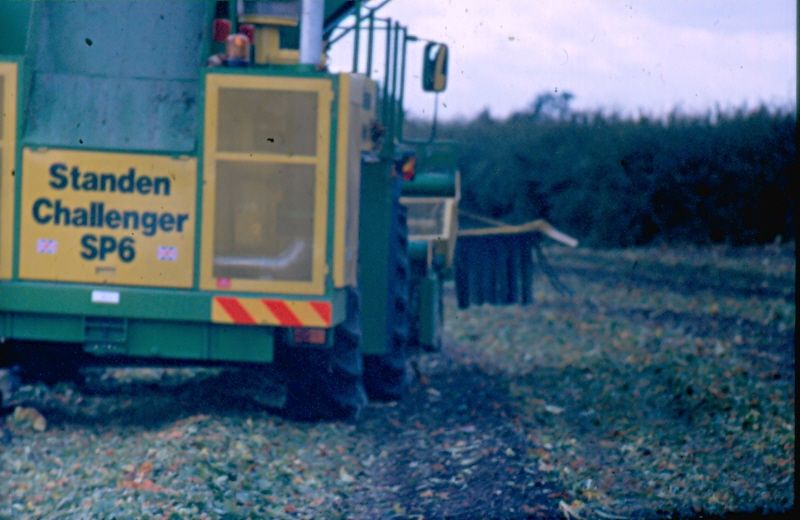
The Standen Challenger! A six row self propelled unit, way ahead of its time in design. Most modern six row harvesters use the lifting layout that this machine developed, lifting the beet in front of the wheels like a combine and transferring it to a mid-mounted tank. It had crab steer, front or rear steer, automatic re aligning of the wheels (wonder who developed the electronic control systems) ,automatic depth control, and a totally unique lifting system. It also had a Rolls-Royce Diesel engine!
,automatic depth control, and a totally unique lifting system. It also had a Rolls-Royce Diesel engine!

A powered spider wheel running against a landslide. Standens tested the idea in secret for many years, on a trailed lifter and it worked well. Unfortunately, for some reason it did not work on the Challenger and the front end had to be modified to take an Oppel wheel lifting system.
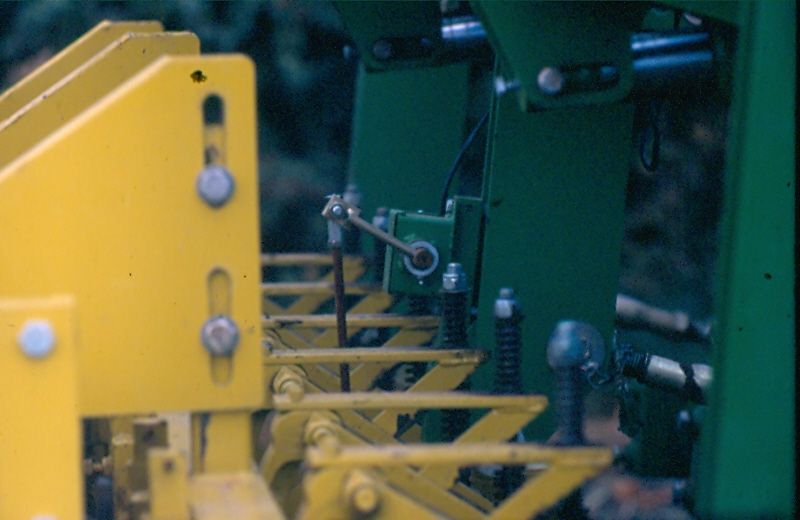
The front mounted depth control sensor. This was a potentiometer designed by a leading company specialising in their design. We bought it in at an incredible price and it came with pages of warranty documents. We were restricted on how many we could buy as this was at the same time as the Falklands war and these units were used in missile control systems. The warranty specified that they were able to work in extreem conditions and immersed down to a depth of 300 metres in sea water. They lasted about a week on the harvester! We had to replace them all with a pot. we designed ourselves.
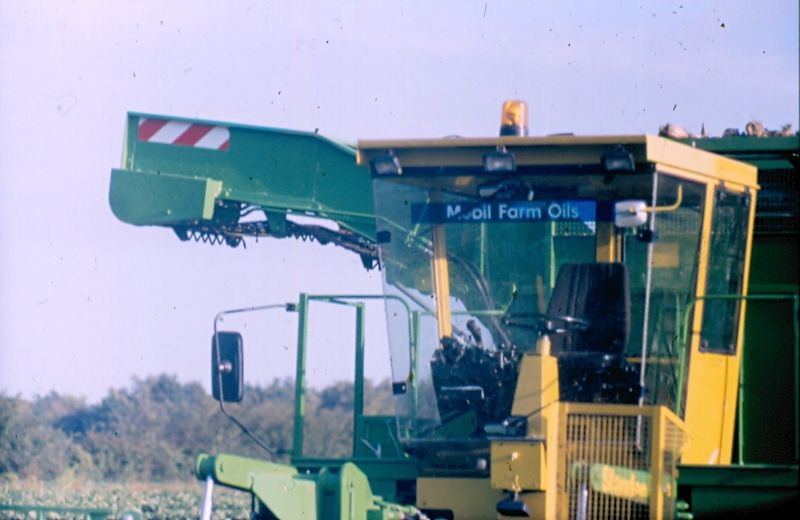
Cab and unloader elevator on Challenger.
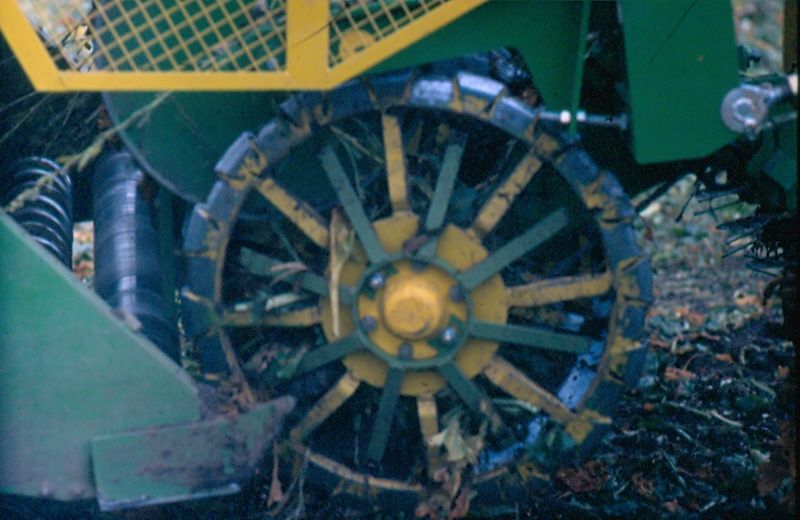
The Oppel wheel lifting system on Challenger.
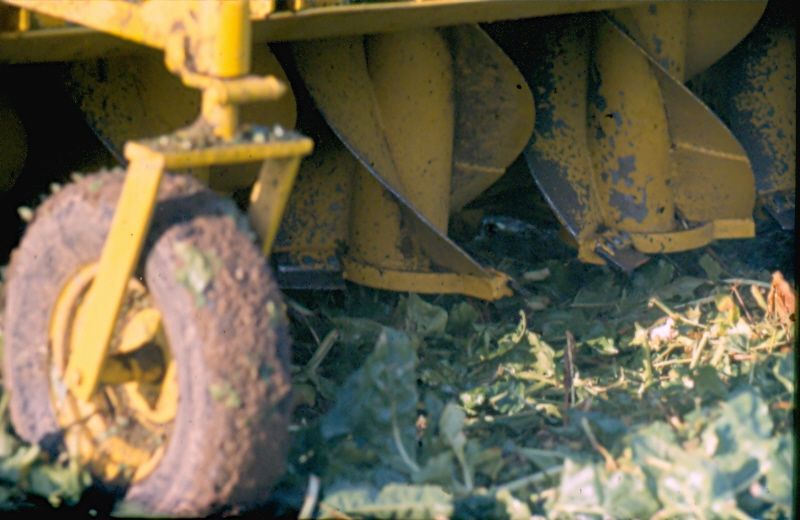
And the Standen Turbo Topper, pre-scalper beet topping as fitted to Challenger and other Standen machines. This system removed most of the leaves from the beet and transported them clear of the crop to the side, leaving the way clear for light weight scalpers to trim the crown of the beet. The Turbo created a lifting action that cleared the ground and leaves. It would also remove side windows, windscreens and rear windows in the cabs of the trailer tractors if you were not carefull. Any stone, no matter how large, quickly became a missile.
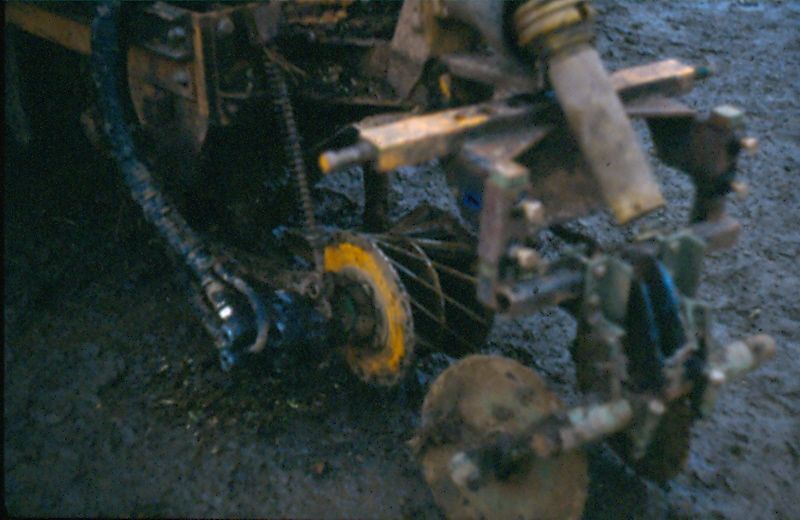
Another Standen development was the "Skewbar topper", a fast spinning, hydraulic motor driven wheel that cleaned the leaves off sugar beet without loosing any of the beet crown.
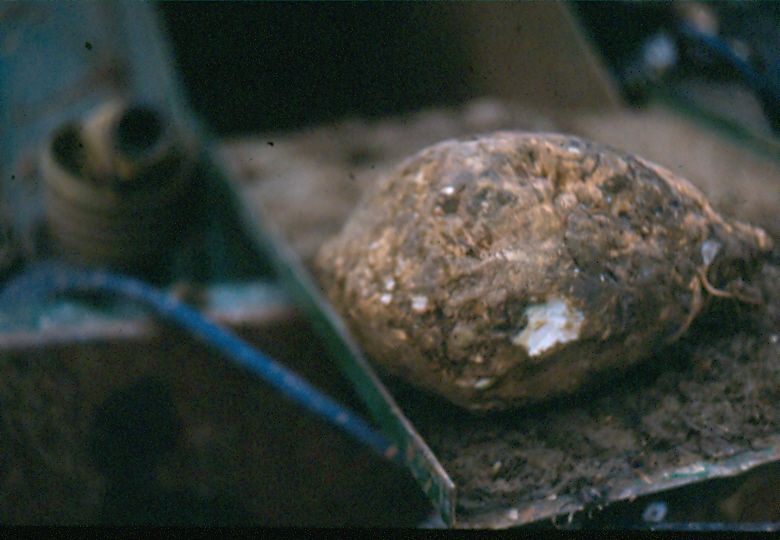
You can see by this picture of a sugar beet, how nicely it has been topped without scalping.

The normal way, at the time was to pre-top with scalping knives.
The skewbar was used on a number of beet harvesters but around this time Standens were going through a management change and beet harvesters were being replaced by potato equipment. The skewbar topper and the electronic depth control systems were taken up br another company, Garfords, and used with great success on the Victor range of harvesters. The depth control system lives on and is now used all over the world on parsnip harvesters and carrot harvester. We even have units working in Russia.
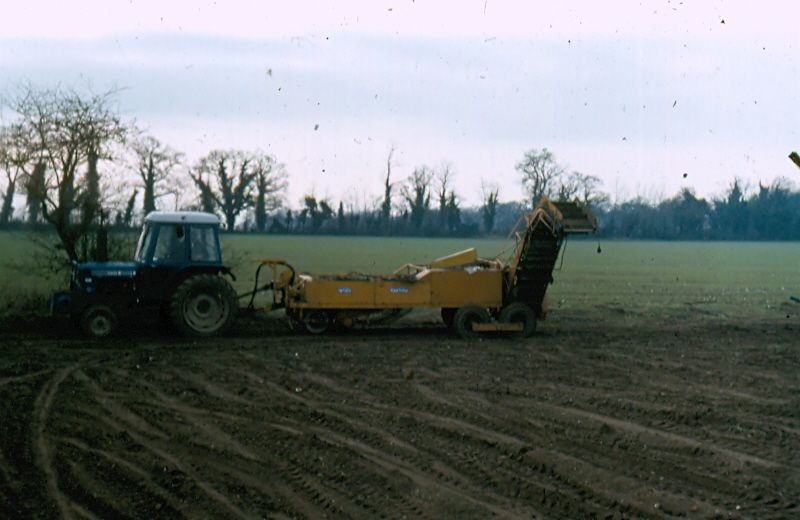
The rare Root Harvesters Victor potato harvester, lifting carrots near Thetford, circa 1983. Root Harvesters were taken over and the harvester and planter side went to a company called KeyAg. They built harvesters and beach cleaners among other things and eventually they were taken over by Standen.
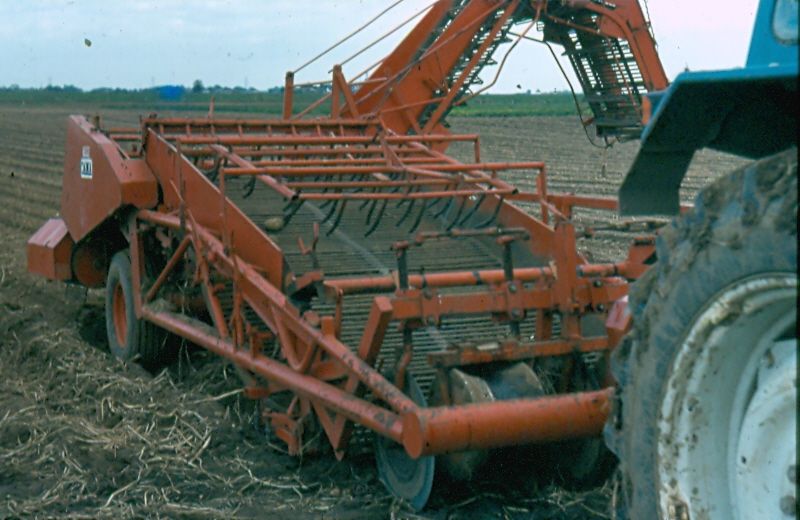
Dutch Amac Harvester working near Downham Market in 1982.
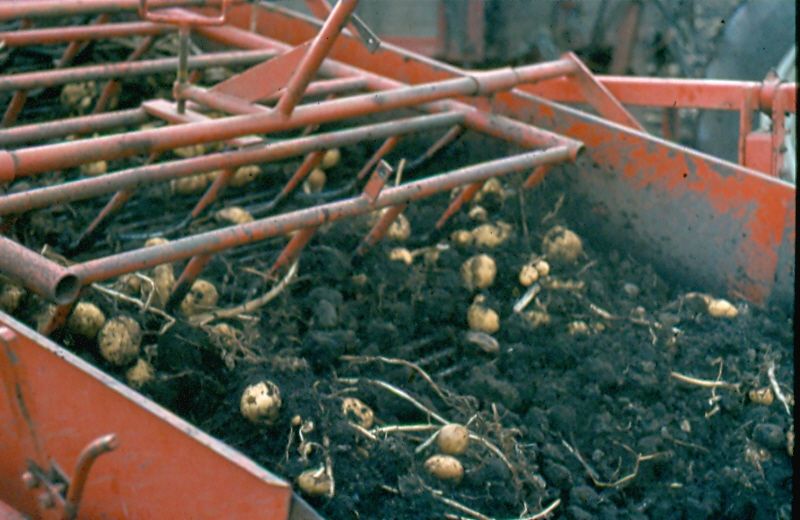
Good crop of potatoes on the first lifting web.
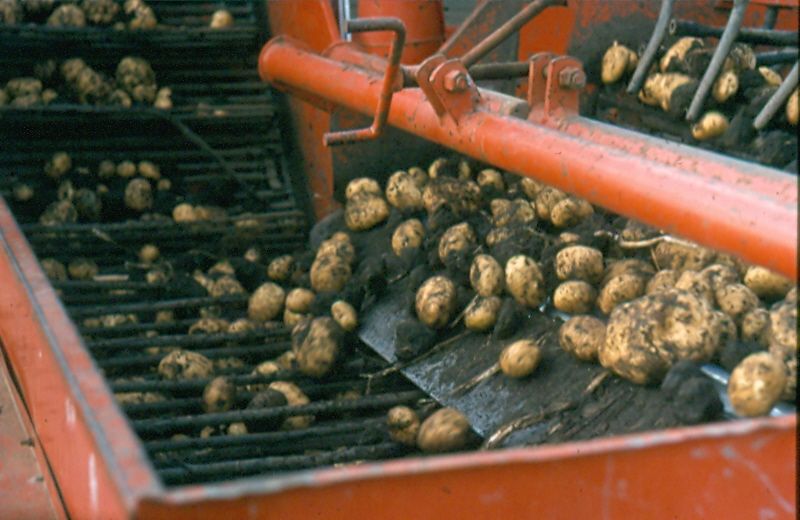
Falling from the lifting webs, now nice and clean, and going into the cart elevator for loading.
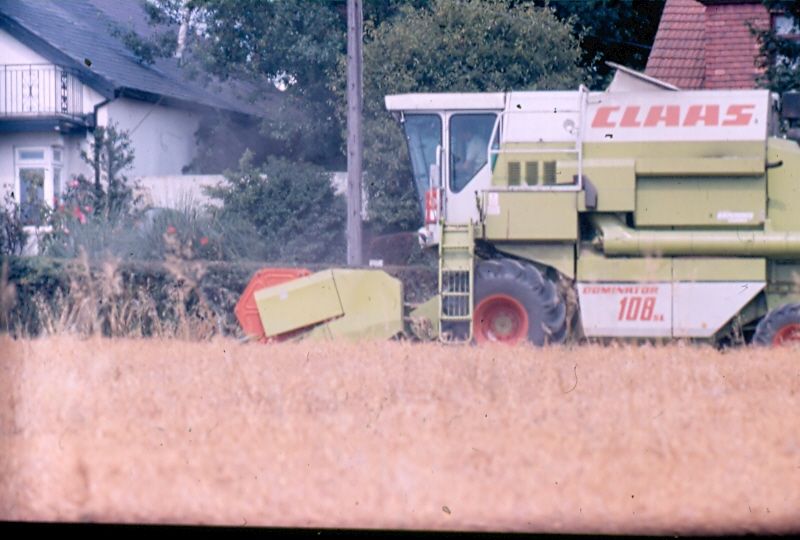
Claas Dominator 108 harvesting peas on the Salvation Army farm near Southend in Essex circa 1986.
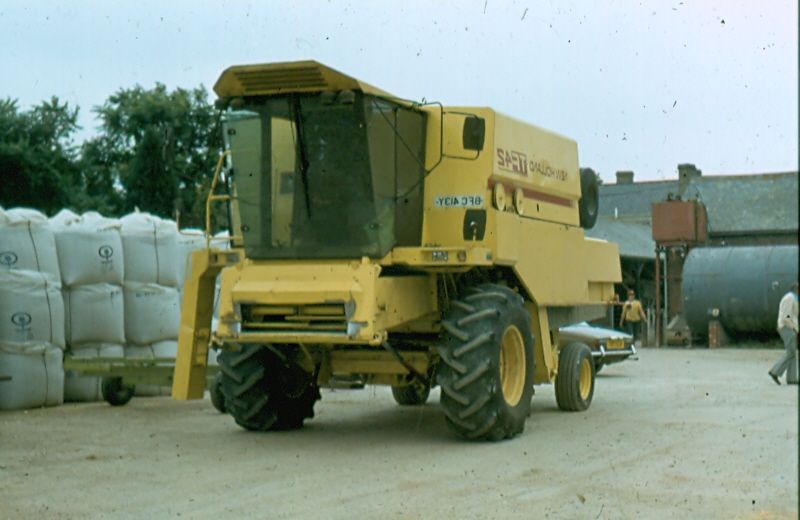
New Holland TF 42 getting ready to roll for an in-field training course.
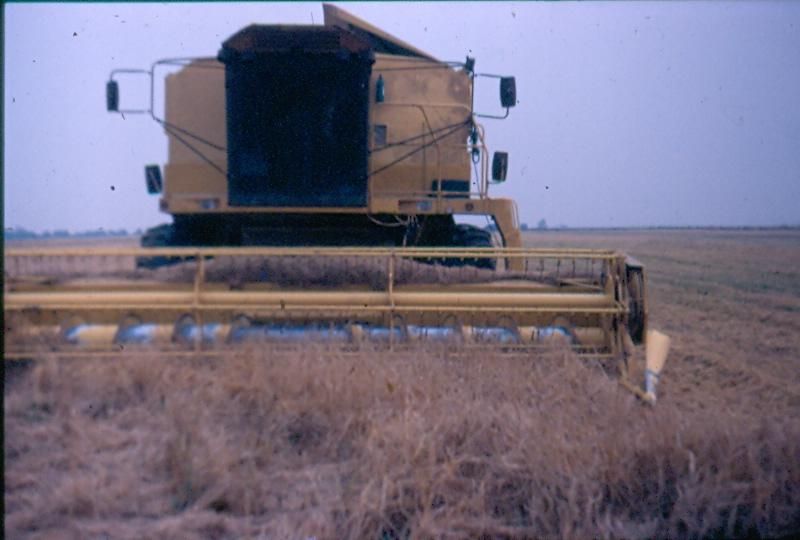
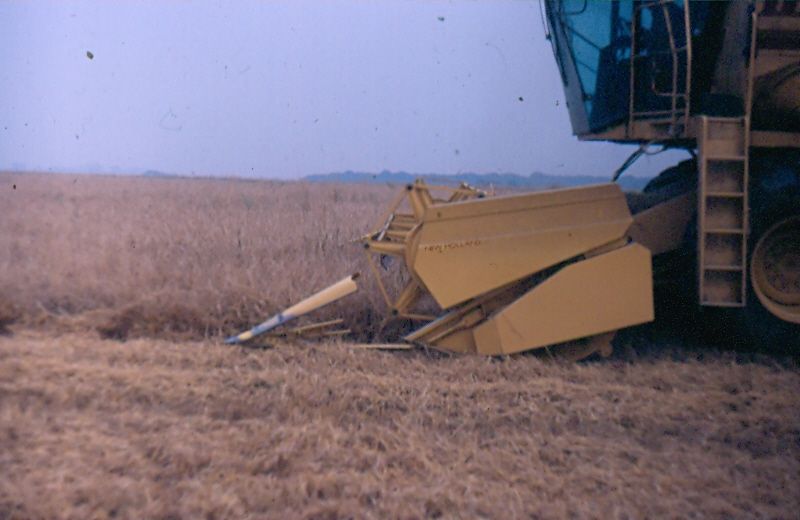

TF 46 in full flight in a field of wheat at Ramsey, Cambridgeshire.

Zetor Potato Harvester, 1983, at the Royal Show, Stoneleigh, Warwickshire.

Ransomes stand at the same show. Potato harvesters and lifter, Ransomes TIM sugar beet harvester and a New Theme plough.

Setting up a demonstration of our original "RiteHite" unit to control the drop height of potatoes being loaded into the trailers. This picture was taken at the Royal Norfolk Show in 1982. We were in a "New Idea" section and won the best demonstration, best idea and a Silver medal. The Silver is the top medal at the show and this was the first time it had been won for a number of years.
The van in the background is a Commer.


RiteHite at work in the field. The unit developed over the years and the mercury switch sensors were replaced with Infra-Red units. This picture was taken in Ireland with a unit fitted to a Reekie harvester. Reekie and Grimme offered the RiteHite as optional equipment.

Standen Tornado, self propelled two row beet harvester. Not as successful as the Standen Solobeet from which it was developed.

Standen Sceptre, three/four row beet harvester. One of the gentlest cleaning machines on the market but was introduced too late. Every farmer wanted a six row self propelled unit.

Standen Sceptre.

A rather large trailer at the beet demonstration 1984.

A Standen Super Six trailed 6 row sugar beet lifter. This was a badge engineered system from a German manufacturer, brought in as a stop-gap until the lauch of .......

The Standen Challenger! A six row self propelled unit, way ahead of its time in design. Most modern six row harvesters use the lifting layout that this machine developed, lifting the beet in front of the wheels like a combine and transferring it to a mid-mounted tank. It had crab steer, front or rear steer, automatic re aligning of the wheels (wonder who developed the electronic control systems)

A powered spider wheel running against a landslide. Standens tested the idea in secret for many years, on a trailed lifter and it worked well. Unfortunately, for some reason it did not work on the Challenger and the front end had to be modified to take an Oppel wheel lifting system.

The front mounted depth control sensor. This was a potentiometer designed by a leading company specialising in their design. We bought it in at an incredible price and it came with pages of warranty documents. We were restricted on how many we could buy as this was at the same time as the Falklands war and these units were used in missile control systems. The warranty specified that they were able to work in extreem conditions and immersed down to a depth of 300 metres in sea water. They lasted about a week on the harvester! We had to replace them all with a pot. we designed ourselves.

Cab and unloader elevator on Challenger.

The Oppel wheel lifting system on Challenger.

And the Standen Turbo Topper, pre-scalper beet topping as fitted to Challenger and other Standen machines. This system removed most of the leaves from the beet and transported them clear of the crop to the side, leaving the way clear for light weight scalpers to trim the crown of the beet. The Turbo created a lifting action that cleared the ground and leaves. It would also remove side windows, windscreens and rear windows in the cabs of the trailer tractors if you were not carefull. Any stone, no matter how large, quickly became a missile.

Another Standen development was the "Skewbar topper", a fast spinning, hydraulic motor driven wheel that cleaned the leaves off sugar beet without loosing any of the beet crown.

You can see by this picture of a sugar beet, how nicely it has been topped without scalping.

The normal way, at the time was to pre-top with scalping knives.
The skewbar was used on a number of beet harvesters but around this time Standens were going through a management change and beet harvesters were being replaced by potato equipment. The skewbar topper and the electronic depth control systems were taken up br another company, Garfords, and used with great success on the Victor range of harvesters. The depth control system lives on and is now used all over the world on parsnip harvesters and carrot harvester. We even have units working in Russia.

The rare Root Harvesters Victor potato harvester, lifting carrots near Thetford, circa 1983. Root Harvesters were taken over and the harvester and planter side went to a company called KeyAg. They built harvesters and beach cleaners among other things and eventually they were taken over by Standen.

Dutch Amac Harvester working near Downham Market in 1982.

Good crop of potatoes on the first lifting web.

Falling from the lifting webs, now nice and clean, and going into the cart elevator for loading.

Claas Dominator 108 harvesting peas on the Salvation Army farm near Southend in Essex circa 1986.

New Holland TF 42 getting ready to roll for an in-field training course.



TF 46 in full flight in a field of wheat at Ramsey, Cambridgeshire.